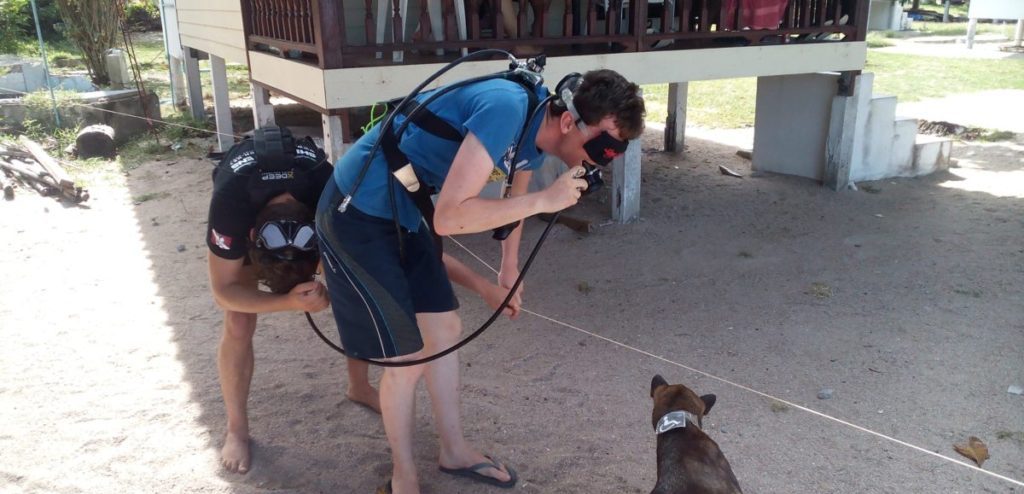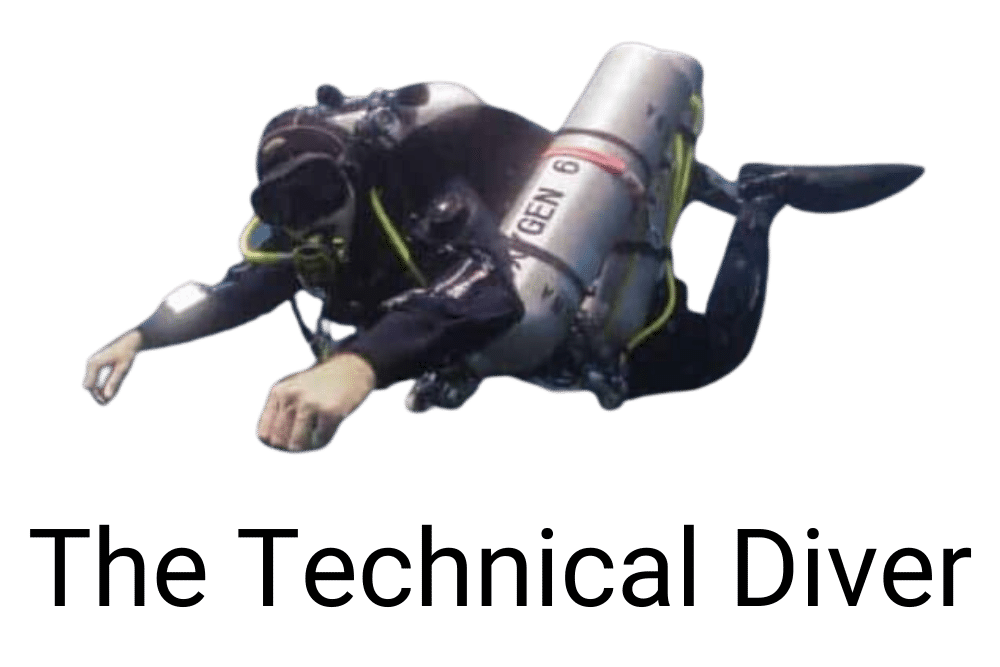Dive Planning Articles

Dive planning articles
Dive planning and procedures are an integral part of any technical diving course. The things you factor in when planning a dive can make all the difference in how the dive pans out. Similarly, being able to efficiently and effectively undertake physical tasks as a team is vital to a successful (safe) dive. These are all taught during technical diving courses, but things get forgotten and humans are wired to make shortcuts. It’s good to refresh and learn more about these important processes.
Considerations for Dive Planning
Understanding all the factors that affect the safety of a dive is essential to good dive planning. It’s not as simple as deciding on a dive profile and punching the numbers into dive-planning software. Understanding CNS limits is vital, yet often brushed over. We now know that, especially for rebreather dives it’s important to have a buffer for the setpoint below the limit of 1.4. So for longer dives 1.3 or even 1.2 may be more appropriate.
Yes, that will give you more deco, but it’s about balancing that with increased exposure to high PO2 at depth. Ocular toxicity is an additional consideration that no one was talking about 15 years ago. These are discussed in the presentations at Rebreather Forum 4, which you can view here.
Gas density has become more prominent over the last 10 years. Professor Simon Mitchell has outlined how it can influence CO2 retention and Immersion Pulmonary Edema. Similarly, gas management is something that divers can get lazy about, especially when it comes to CCR bailout.
Considerations for Diving Procedures
Emergency procedures are something that divers train for during a course, but then sadly rarely practice again. It’s one thing to have an out-of-air diver, but what about an unconscious diver on the bottom phase of a deco dive? Some of the articles below cover these scenarios. There is a lot of good information in these articles.
Life-ending seconds by Advanced Diver Magazine was particularly eye-opening when it was first published. The article is available below. Also, the diver rescue film by TDI and IANTD is very insightful. Both videos are included in the Twinset skills and tutorials section on the website, which you can view here, but i’ve also included them below.
If you know of any useful articles that are not listed I’d be grateful if you could let me know.
Dive planning articles
Gas density calculator– by Richard Burton
Important rules- Team Blue Immersion
Daily limits of CNS oxygen toxicity- Doppler’s tech diving blog
Multideco tutorial- HSS software corp
Baltic Deco quick start guide- Baltic Deco Planner
V-planner tutorial- Team Blue Immersion
V-planner support– HSS software corp
CNS oxygen exposure limits- NOAA
NOAA pulmonary oxygen exposure limits– NOAA
Planning decompression diving gas requirements in open water- Harrowfield
Factors in deep scuba diving- Doppler’s tech diving blog
Helitrox decompression, class notes- Doppler’s tech diving blog
Why UPTD calculations should not be used- Shearwater Research
Planning advanced dives: choosing the instructor- Shearwater Research
Checklists, a tick in the box- Gareth Lock
The evolution of dive planning- Mark Powell
Diving procedures articles
The first deep rebreather dive using hydrogen: case report- Harris RJ, Challen CJ, Mitchell SJ
Air breaks, what are they, and do people take them for the wrong reason?-Doppler’s tech diving blog
Omitted decompression and in water recompression, some thoughts- Doppler’s tech diving blog
Recommendations for rescue of a submerged unresponsive compressed-gas diver– Mitchell et al
Life-ending seconds- Advanced Diver magazine
Tech diving hand signals- Matthew Partridge
What it takes to lead a technical dive team- Doppler’s tech diving blog
Donating the longhose in sidemount- Doppler’s tech diving blog
Stage-bottle logic- Doppler’s tech diving blog
Teaching yourself situational awareness- Doppler’s tech diving blog
What ascent profile for the prevention of decompression sickness?- Bennett el al.
Recovering an unconscious diver from depth– GUE
Situational awareness- Alert diver
Rescue of an unconscious diver- Divers Alert Network
The provision of breathing gas to divers in emergency situations- HSE
DIR Articles- George Irvine
Decompression in Diving with Gas Mixtures- Jaume Riba
Inwater recompression- Undercurrent Magazine
In-water recompression- Divers Alert Network
In-water recompression- DJ Doolette and SJ Mitchell
A new look at in-water recompression- inDepth Magazine
